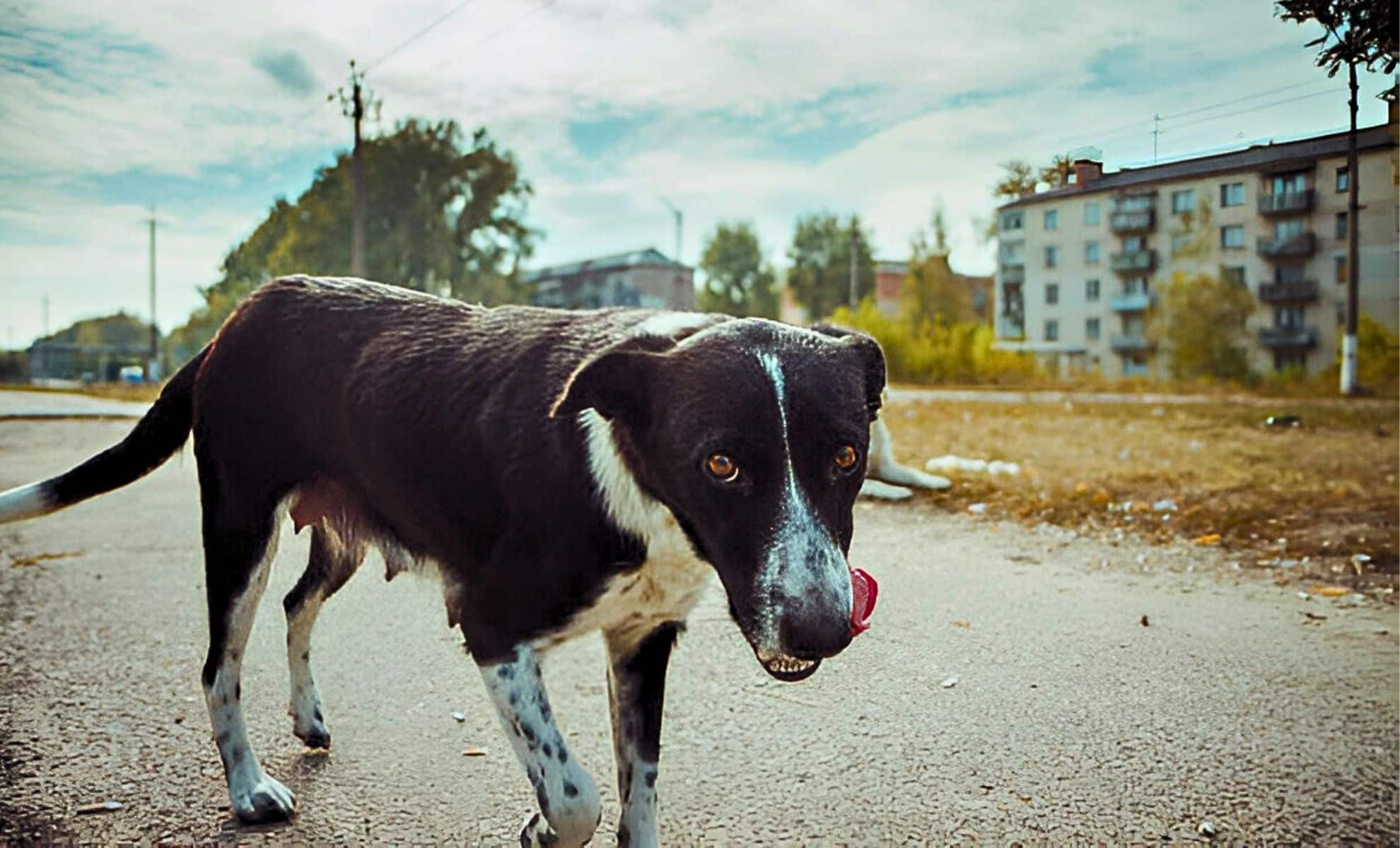
The Chernobyl Exclusion Zone (CEZ) is notorious as one of the globe’s most hazardous locations, a result of the catastrophic nuclear disaster that occurred in 1986. Surprisingly, amidst this perilous environment, life continues—not just surviving but thriving. A remarkable population of feral dogs has emerged, roaming the desolate streets and forests of this abandoned area.
Research on these dogs reveals a fascinating insight: their DNA is evolving at an increasingly rapid rate compared to their counterparts outside the zone. Is radiation acting as a catalyst for this accelerated evolutionary change, or could other, more mysterious factors be involved?
A Radioactive Nurture for a New Type of Survivor?
Following the Chernobyl nuclear reactor explosion, countless residents were compelled to evacuate, leaving behind not only their homes but also their pets. Over the years, these forsaken dogs have formed feral groups, adjusting to the harsh conditions of the CEZ. With elevated radiation levels, low human interaction, and limited resources, these animals encounter unique challenges that may be altering their genetic structure.
A pioneering investigation conducted by the University of South Carolina and the National Human Genome Research Institute studied the DNA of 302 feral dogs in and around the CEZ. The results revealed that these dogs’ genetic profiles are diverging at an extraordinary pace from those living just outside the exclusion zone.
“What kinds of obstacles do they confront, and how are they managing to adapt genetically?” inquires Elaine Ostrander, a prominent researcher in canine genomics. The answer seems to be rooted in their extraordinary mutations.


Mutations, Survival, and the Science Driving Rapid Evolution
Researchers have long acknowledged that radiation can lead to genetic mutations, yet the situation in Chernobyl surpasses conventional DNA damage. The dogs located in high-radiation zones are acquiring unique genetic traits, differentiating them from their counterparts just a few miles away.
Some critical genetic variations noted in the Chernobyl canines include:
- Accelerated genetic divergence – Their DNA shifts more rapidly compared to non-radiated populations.
- Potential radiation-linked mutations – Exposure to low doses of ionizing radiation may be influencing survival-boosting adaptations.
- Decreased genetic diversity – Inbreeding within a limited population is affecting their gene expression.
- Immune system adaptations – Indications suggest heightened resistance to environmental stress factors.
- Altered pigmentation – Some dogs show darker coats, similar to Chernobyl’s blackened frogs, potentially as a defense mechanism against radiation.
The critical question remains: Are these mutations advantageous, neutral, or detrimental? Currently, researchers have yet to determine a definitive answer, but the rate of change is indisputable.


Radiation as an Unexpected Accelerator of Evolution?
While radiation is predominantly viewed as a harbinger of devastating repercussions, could it paradoxically serve as an unanticipated force for evolutionary enhancement? Research suggests that radiation can trigger beneficial mutations in both plants and bacteria. The situation with the dogs in Chernobyl implies something similar may be unfolding in real-time among a complex mammalian species.
Distinct from many other beneficiaries of nuclear disasters, these dogs are not merely surviving the radiation; they may be adapting to it. Some scientists propose that persistent exposure to low-dose radiation could promote rapid selection, eliminating weaker genetic variants and enhancing traits that support survival.
“These genetic changes might stem from mutations that assist them in enduring radiation,” Ostrander comments. If verified, the dogs of Chernobyl could signify more than just mutants—they may represent canines on a fast-tracked evolutionary trajectory.
More than Canines: A Wider Evolutionary Scenario
The transformative changes aren’t limited to dogs. Various wildlife within the CEZ are also showing signs of adaptation, hinting at a larger evolutionary phenomenon.
- Tree frogs in Chernobyl, typically green, have evolved to display darker hues, possibly as a radiation-resistant adaptation through heightened melanin production.
- Birds in the area have developed increased antioxidant levels, helping counteract the detrimental effects of radiation.
- Rodents and wolves appear to be flourishing despite radiation levels that should, theoretically, be fatal.
If radiation is indeed a catalyst for evolutionary change, Chernobyl may not just represent a dead zone but might also serve as a unique testing ground for natural selection like no other on the planet.
The Future of Chernobyl’s Genetic Transformations
The DNA of the Chernobyl dogs could offer crucial insights into how life adapts to extreme conditions. With space agencies investigating the long-term impacts of cosmic radiation on humans for potential Mars missions, comprehending how organisms manage radiation exposure holds increasing significance.
What if these dogs are not just surviving but are evolving into something new? Could we witness the emergence of a radiation-adapted breed or perhaps an entirely new species?
For now, the Chernobyl dogs remain an intriguing mystery—one that could redefine our perspectives on evolution, adaptation, and survival in ways we have yet to fully grasp.
This groundbreaking study was originally published in the journal Science Advances.
Have thoughts on this topic? We invite you to share your insights in the comments.
Enjoyed this piece? Sign up for our free newsletter for captivating stories, exclusive content, and the latest updates.









